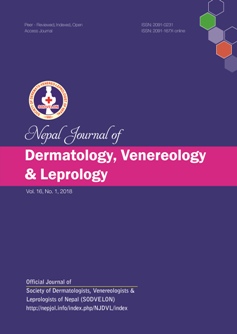Periorbital Hyperpigmentation: Overcoming the Challenges in the Management
DOI:
https://doi.org/10.3126/njdvl.v16i1.19411Keywords:
Bleaching agents, chemexfoliation, hyperpigmentation, melanosis, reactive oxygen speciesAbstract
Periorbital hyperpigmentation, also referring as dark circles or periorbital melanosis, is not a medical problem but can be a significant cosmetic concern for a large number of individuals and they try to find a treatment for this condition. This condition affects individuals in a wide range of ages, both sexes and all races. The therapeutic approach must vary with cause as it is multifactorial. Possible causes include excessive pigmentation, volume loss, skin laxity, tear trough, increased prominence and density of subcutaneous vasculature and orbital structural problem. Treatment modalities include topical bleaching agents, chemical peeling, and lasers, injectable fillers, fat transfer, high intensity focused ultrasound and surgery as monotherapy or in combination therapy to target the contributing factors of periorbital hyperpigmentation.
Downloads
Downloads
Published
How to Cite
Issue
Section
License
Copyright on any research article is transferred in full to Nepal Journal of Dermatology, Venereology & Leprology upon publication. The copyright transfer includes the right to reproduce and distribute the article in any form of reproduction (printing, electronic media or any other form).




